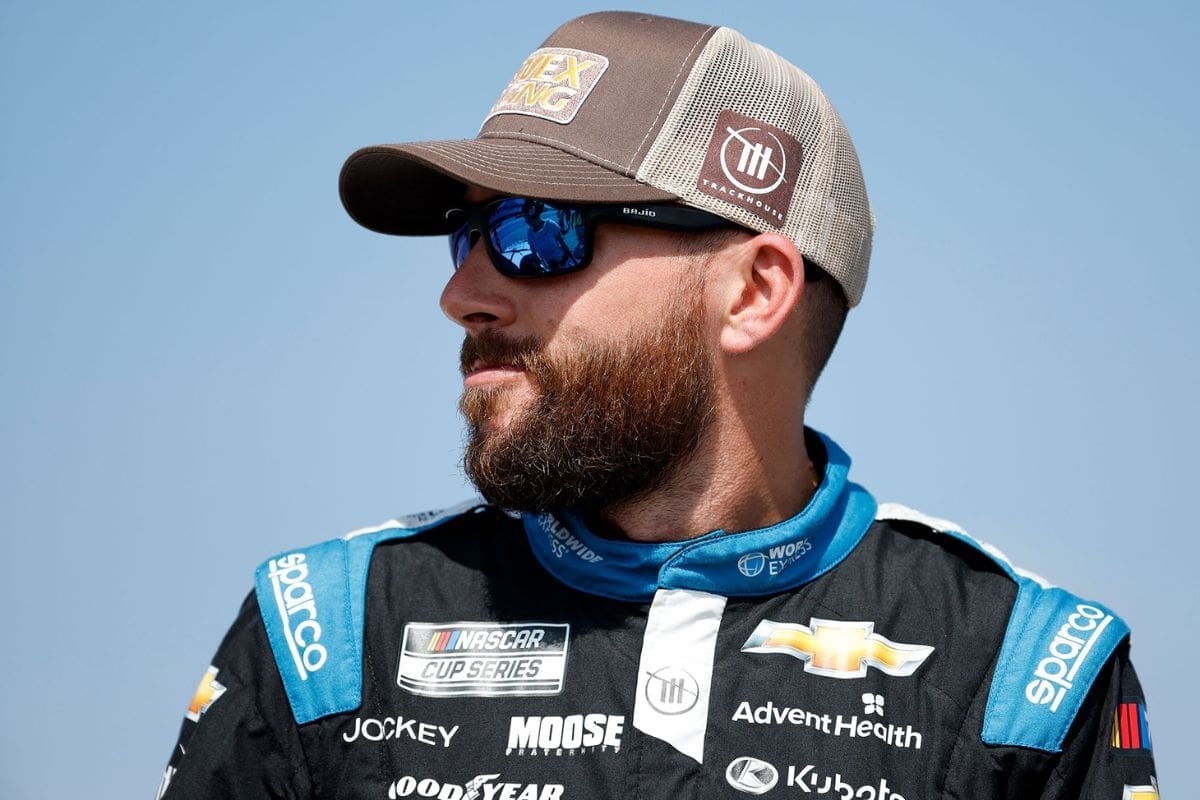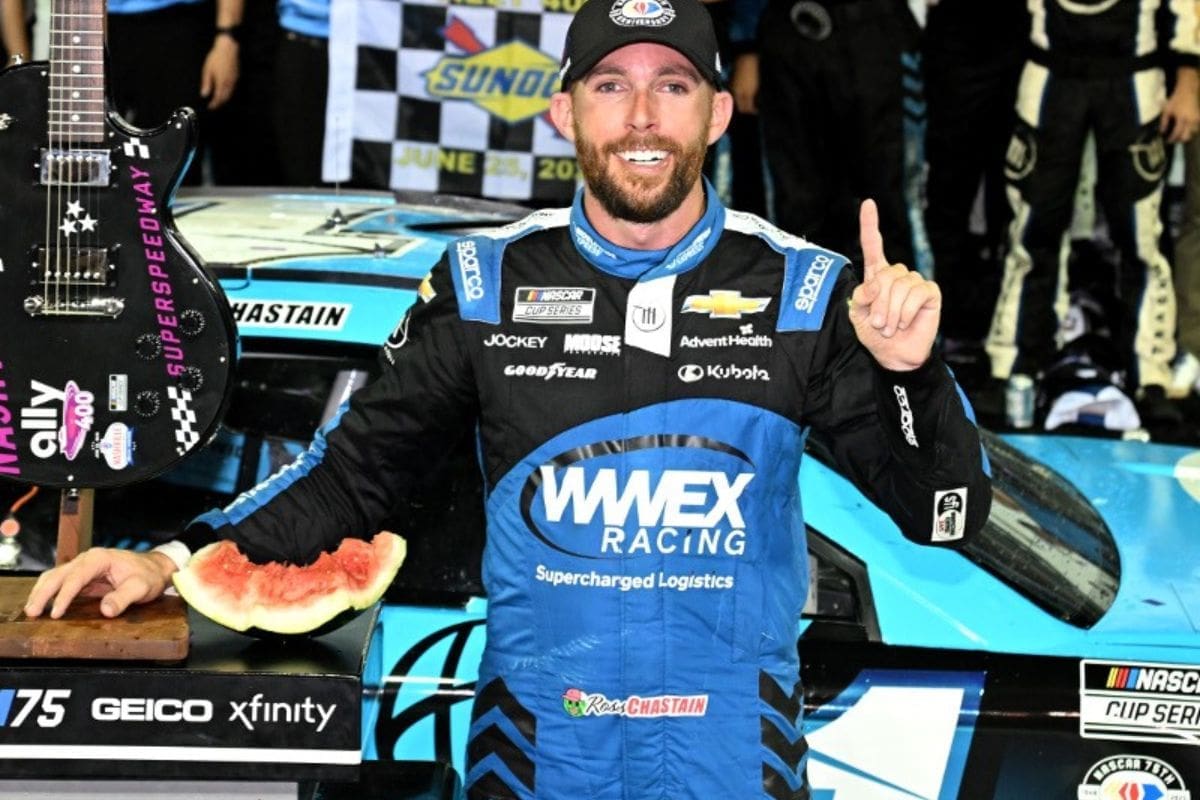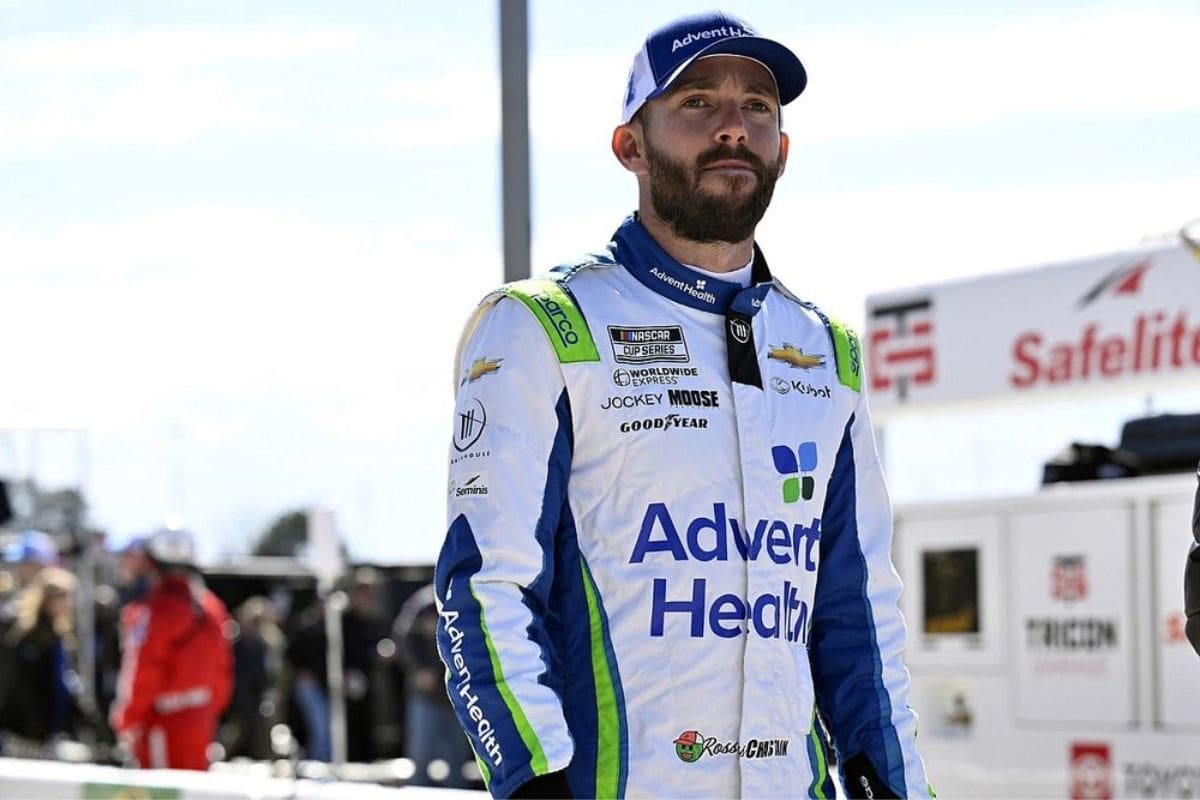Ross Chastain Concerned About Changes in IMS Oval Layout: Ross Chastain‘s concerns about the modifications to the IMS oval layout emphasize the inherent complexities of adjusting to a reconfigured track. His comments show the crucial role that precision and adaptability play in maneuvering such changes, particularly in high-pressure settings such as the Indianapolis Motor Speedway. With NASCAR shifting back to the oval from the road course, Chastain’s expertise becomes a focal point for grasping the subtleties of this adjustment. As he carefully refines his setup and improves his physical conditioning, the broader impacts of these changes on race strategy and performance warrant a more thorough investigation.
Key Takeaways
- Ross Chastain acknowledges the challenging nature of the updated IMS oval layout.
- Chastain emphasizes the need for precision and adaptability on the IMS oval track.
- Modified track configuration impacts racing strategies and performance outcomes.
- Chastain draws comparisons between IMS oval and Pocono Raceway’s ‘tricky triangle.’
- Preparation includes collaboration with the team for setup and physical conditioning.
Ross Chastain’s Return to Indianapolis Motor Speedway
Ross Chastain’s comeback to Indianapolis Motor Speedway brings a mix of excitement and introspection as he readies to navigate the intricacies of the iconic Brickyard 400. This legendary track, with its rich heritage in motorsport history, presents both a challenging hurdle and a significant opportunity for the Trackhouse Racing Team driver. Chastain, steering the No. 1 Chevrolet in the Cup Series, is no newcomer to the venue, having initially competed there in the NASCAR Truck Series in 2011. His first exposure to the track occurred at Lucas Oil Raceway Park, where he piloted the No. 66 entry, an experience that unquestionably set the foundation for his current pursuits.
The Brickyard 400 is more than just another race; it signifies a peak of accomplishment and stamina within the NASCAR circuit. As Chastain readies for this high-stakes event, he brings along a wealth of experience and a nuanced grasp of the track’s requirements.
Chastain’s involvement in a double-duty weekend highlights his dedication and flexibility. Participating in the TSport 200 at Indianapolis Raceway Park for Niece Motorsports before taking on the Brickyard 400 on Sunday demands not just physical endurance but also mental sharpness. This dual participation demonstrates his unwavering determination to excel and his calculated approach to mastering different racing formats.
NASCAR’s Transition from Road Course to Oval at Indianapolis Motor Speedway
NASCAR’s calculated decision to revert its Cup Series race from the road layout back to the circular track at Indianapolis Motor Speedway reflects a deliberate effort to re-embrace heritage while addressing both competitive and fan-centric considerations. The shift back to the circular track, a hallmark of the Brickyard 400, highlights NASCAR‘s acknowledgment of the historical significance and distinctive challenges posed by the iconic 2.5-mile course. By doing so, NASCAR aims to reignite the legendary history of the Brickyard races, which have been a fixture of the motorsport calendar since 1994.
This change is not just about nostalgia; it is also a strategic move to improve the competitive integrity and spectacle of the event. The circular track’s layout requires high-speed precision, tire management, and well-timed pit stops, elements that intensify the racing dynamics and challenge the skill of drivers and teams. The road layout, despite offering a range of challenges, did not generate the same level of excitement and fan involvement as the circular track.
UNBELIEVABLE!@RossChastain floors it along the wall to go from 10th to 5th and advance to the CHAMPIONSHIP! #NASCARPlayoffs pic.twitter.com/9qX3eq7T6h
— NASCAR on NBC (@NASCARonNBC) October 30, 2022
Moreover, the decision is a response to feedback from various stakeholders within the sport, including drivers, teams, and spectators. The circular track’s high-speed, side-by-side racing highlights NASCAR’s fundamental identity, and its comeback is anticipated to boost viewership and attendance. As the sport progresses, striking a balance between innovation and tradition remains essential, and this move exemplifies NASCAR’s dedication to honoring its origins while aiming for continuous improvement.
Chastain’s Perspective on Returning to the Oval Track
Highlighting the nuanced challenges and tactical adjustments necessitated by the updated car version, Chastain expressed a keen awareness of the complexities involved in returning to the oval track at Indianapolis Motor Speedway. He emphasized the distinctive shift in dynamics brought forth by the latest car modifications, which have altered the way drivers approach the venerable track’s demanding layout. Chastain noted that these changes could potentially disrupt the equilibrium for teams less familiar with the new specifications, thereby heightening the competitive landscape.
“It’s good to be back on the oval. lt’s a good change of pace. It’s the first time we’ll be on the oval with this version of the car. A couple of guys did the test there so they’ll probably have a little bit of an upper hand, It’s been a while since I’ve been on the oval but I know how challenging it can be. If we’re good at Pocono, we’ll probably be good at Indy.” -(ross)
A significant aspect of Chastain’s perspective is his recognition of the testing advantage held by certain teams. Those who have already conducted trials on the revamped oval are expected to enter the race with a strategic upper hand, having gathered essential data and fine-tuned their setups to the specific demands of the track. This preparatory edge could translate into notable performance disparities, making the race more unpredictable and challenging for those without prior testing experience.
Chastain’s reflections also explored the inherent difficulty of the Indianapolis oval, likening its complexity to that of Pocono Raceway’s tricky triangle. The comparison elucidates the strategic depth required to navigate the oval’s unique characteristics, which demand a blend of precision, adaptability, and technical expertise.
Despite these hurdles, Chastain’s enthusiasm to return to the iconic track is palpable. His remarks convey a respect for the storied venue and a readiness to tackle the intricate challenges it presents, highlighting a broader sentiment shared by many drivers eager to prove their skills on one of motorsport’s most revered stages.
Expectations and Preparation for the Truck Series Race
In preparation for the Truck Series race at Indianapolis, Chastain analyzed his prior performance and fine-tuned his strategies to align with the unique demands of the track. Drawing from his debut truck start at the venue, Chastain is acutely aware of the details and challenges that the Indianapolis Motor Speedway (IMS) oval presents. His preparation has been thorough, covering both mental and physical aspects to guarantee peak performance.
“I don’t know. I haven’t been there since my first race in NASCAR. That was my first truck start. I’ve had a desire to get back there and I’m finally getting there.”-(ross)
The “Martinsville Miracle” driver retired from the NASCAR race at Pocono in stage 2 after completing 53 laps. He lost his power steering and crashed into the wall, resulting in a P37 finish, second from last. Currently sitting at P13 in the drivers’ standings, Ross Chastain will be looking to bounce back from his disappointment at Pocono as he prepares to return to Indianapolis.
- Track Familiarity: Reviewing data from his previous appearances, Chastain has explored deeply into telemetry and race footage to identify areas for improvement. This detailed analysis aims to refine his braking points, cornering techniques, and overall race strategy.
- Vehicle Optimization: Collaborating closely with his team, Chastain has been involved in fine-tuning the truck’s setup to suit the IMS oval. This includes adjustments in aerodynamics, suspension, and tire management, ensuring that the vehicle is primed for the unique stresses of the track.
- Mental and Physical Conditioning: Recognizing the physical demands of the IMS oval, Chastain has incorporated targeted training routines to boost his stamina and focus. This preparation is designed to maintain peak cognitive function and physical resilience throughout the demanding race.
Chastain’s anticipation for the Truck Series race is visible, fueled by a combination of experience and rigorous preparation. His readiness to tackle the IMS oval is supported by a strategic approach that leaves no stone unturned, positioning him as a formidable contender.
Ross Chastain’s Recent Performance and Historical NASCAR Moment
Despite a setback at Pocono where power steering issues led to a 37th-place finish, Ross Chastain remains resolute as he reflects on his creative wall ride at Martinsville in 2022, a maneuver inspired by childhood gaming and etched into NASCAR history before its subsequent prohibition. This audacious move, born from a video game tactic, showcased Chastain’s inventive thinking and willingness to push the boundaries of traditional racing strategies. It was a decisive moment that propelled him into the final four of the championship race, leaving an indelible mark on the sport.
“I played a lot of NASCAR 2005 on the Gamecube with [brother] Chad growing up, and you could get away with it. I never knew if it would actually work, and I did that when I was eight years old.”-(ross)
Chastain’s recent performance, however, has been a mix of highs and lows. Currently holding 13th place in the driver standings, he faces the challenge of maintaining consistency amidst the unpredictable nature of racing. The Pocono incident highlights the inherent volatility in motorsports, where mechanical failures can suddenly change the course of a season. Yet, Chastain’s resilience and ability to bounce back from adversity are crucial as he prepares for upcoming races, including his return to the renowned Indianapolis Motor Speedway (IMS).
"Played a lot of NASCAR 2005 on the GameCube."@RossChastain explained his video-game move. #NASCAR pic.twitter.com/4jkF6BzAgk
— NASCAR on NBC (@NASCARonNBC) October 30, 2022
Analyzing Chastain’s path reveals a driver keen on originality yet grounded by the realities of racing’s mechanical and tactical demands. The Martinsville wall ride is not just a highlight of his career; it embodies his approach to racing—bold, unconventional, and ready to utilize every possible advantage.
Chastain’s historical moment at Martinsville serves as both a reminder of his potential and a benchmark for future aspirations. His journey emphasizes the dynamic interplay between creativity and resilience in the pursuit of NASCAR excellence.
News in Brief: Ross Chastain Concerned About Changes in IMS Oval Layout
The modifications to the Indianapolis Motor Speedway oval layout present notable challenges that require precision, adaptability, and specialized expertise.
Ross Chastain’s approach to overcoming these challenges through careful setup adjustments and rigorous physical conditioning highlights his dedication to success.
The intricacies of adapting to the revised track configuration encapsulate the detailed requirements of oval racing, emphasizing the crucial significance of preparation and thought-out execution in maneuvering through this changing motorsport terrain.
ALSO READ: Ross Chastain Blocks Bubba Wallace’s Playoff Path, Despite Pocono Setback





